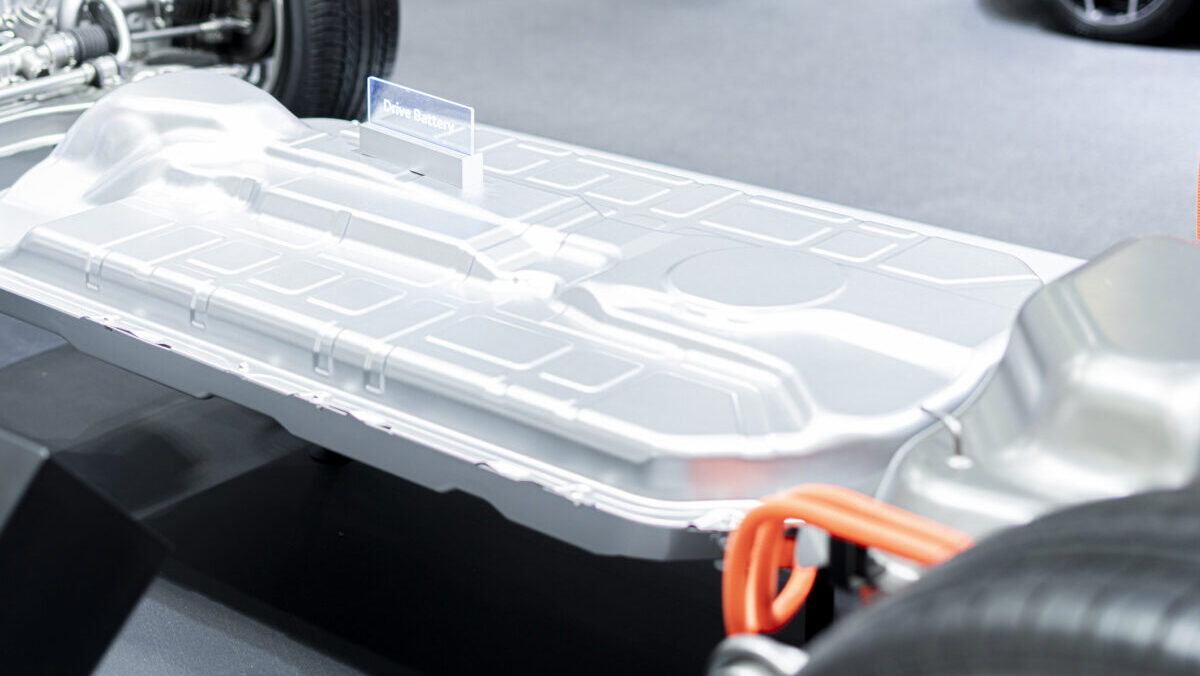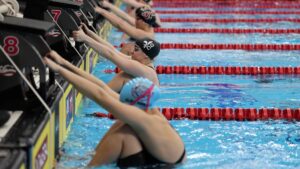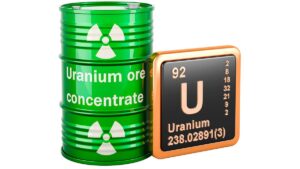Ground Breakers: How are the other battery metal products faring as China’s economy stutters?

Pic: Songsak Rohprasit/Moment via Getty Images
- EV battery demand has chilled in China in August, with nickel, cobalt and graphite feeling the pinch
- Chinese graphite production is ramping up in expectation of strong long-term demand
- IRA compliant cobalt could be netting double the price of standard DRC-China product, Benchmark says
For all the talk of developing supply chains outside China, the battery and EV business is very much a China story for now.
And at the moment, the general trend of the EV supply chain is down. While EV sales continue to increase, conversion capacity has caught up, with lithium and other battery metals facing headwinds.
In part that is because last year’s market was so mad that China hit its 2025 EV penetrations targets in 2022.
It also comes down to some general issues in the Chinese economy, where a stuttering return from Covid lockdowns and high youth unemployment means spending is a little limp.
Lithium prices have suffered two monthly contractions after a mid-year revival and are looking like they’ll post a third in September at this rate.
But there remains incredible enthusiasm for lithium stocks thanks to a tidal wave of M&A activity that shows the big boys of the sector see dollar signs in their future.
Albemarle’s $6.6b bid for Liontown Resources (ASX:LTR) is chief among that. It values LTR at a long term spod price of US$1900/t, according to Canaccord Genuity, and US$1630-1800/t according to Goldman Sachs.
While that’s below current spot levels of around US$3250/t (as per Fastmarkets), it is well above the average of US$1260/t and US$1300/t assessed across sector valuations by CG and GS respectively.
With long term outlooks like that projected in the Albemarle bid, short term fluctuations in lithium prices may be of little concern to investors.
So we know lithium is on your mind. But there are other battery metals which have been similarly impacted by the lull in the battery industry.
With that said, let’s get a look around the grounds to see what analysts at Benchmark Minerals Intelligence have to say about nickel, graphite and cobalt.
Nickel – Turning battery nickel to metal
A quiet demand period for batteries with nickel-cobalt-manganese cathode chemistries, used in long-range EVs like the Tesla Model 3, has seen nickel sulphate converted to nickel metal.
It is a strange situation given the conversion typically goes the other way, from class 1 LME grade nickel to battery products.
At US$4913/t CIF Asia, nickel sulphate is down 1.75% though it still carries a premium to the LME nickel price (while LME nickel prices are upwards of US$21,000/t, sulphate has a far lower nickel metal content).
That premium has fallen 3.2% in August to US$1525/t.
“This weak NCM demand has caused sulphate producers to sell predominantly to Class I nickel manufacturers since nickel cathode still trades at a high price on the SHFE,” BMI says.
“Despite high nickel cathode prices, cathode refiners have been placing low sulphate offers, however, prices seemed to bottom out at RMB 30,000/tonne ($4,110) toward the end of the assessment period.
“Weak downstream demand causing an oversupply in the Chinese sulphate market has pulled CIF Asia sulphate prices down, albeit by 1.8% compared to July.”
Domestic Chinese sulphate prices are down 20.9% YTD, with the premium over SHFE and LME metal prices falling 37.7% and 60.6% respectively. The premium for ex-China sulphate has fallen 6.2% YTD, with sulphate prices down 27.8%.
Mixed hydroxide precipitate prices meanwhile fell due to rising capacity in the Philippines and Indonesia, dropping 3.38% in August.
“Consequently, MHP oversupply has grown as Chinese battery manufacturers favour LFP cathodes for the time being,” BMI said.
“Nevertheless, some major MHP producers continue to sell at a 75% payable to the LME amongst reports of slow supply out of Indonesia. Furthermore, an investigation into illegal mining quotas in Indonesia has raised ore prices, with smelters reportedly paying up to 15% more.”
BMI says there remains confusion about the IRA compliance of Indonesian nickel, with Korea’s POSCO signing an MOA to produce MHP in the Philippines in a bid to sell IRA compliant product into the US market.
China keeps pumping out more graphite
Graphite is the great sleeper metal of the energy transition.
It makes up 25% of the metal content of an EV lithium-ion battery. But Benchmark’s flake graphite index has fallen 28.1% year to date, despite clear long term demand for more of the stuff.
High purity -100 mesh 94-95% flake graphite for batteries was down 6.9% on the month and 28.9% YTD to US$578/t.
BMI says there were strong supply increases in China’s Heilongjiang Province and its Luobei and Jixi Counties, aligned with seasonal norms.
“Amidst a robust graphite supply picture in China, downstream demand from the EV industry remained sluggish. Moreover, comfortable anode material inventory levels at battery cell makers led to reduced demand for graphite material from anode manufacturers,” BMI said.
“This muted demand was reflected in EV sales figures in China, which fell by 3.2% m-o-m throughout July to reach 780,000 units. This translated through to cell production statistics, with LFP battery cell production in China falling by 4.0% m-o-m to reach 40.5 GWh in July.”
There is hope for the fourth quarter however.
“Despite sluggish near-term downstream demand, contacts reported to Benchmark that EV sales in the Chinese domestic market are expected to increase throughout Q4 2023, aligning with the typical trend observed during this period of the year,” BMI said.
That doesn’t mean companies aren’t looking long-term at strong future demand.
“Even though demand from end use markets was not particularly strong during July, natural graphite project announcements in China continued as market participants looked to bring online capacity to meet expectations of heightened demand in the longer term,” they said.
“For example, Chinese mining major, China Minmetals Heilongjiang Graphite, announced in late August that it had begun pilot-scale production at its 200,000tpa nameplate capacity natural graphite processing facility in Heilongjiang Province, China.
“Moreover, Chinese anode market participant, Carbon ONE New Energy Group,
signed equity investment agreements in late August with Chinese companies, Jixi Tiande Mining and Beijing Zhaode Emma Trading, to construct a 200,000tpa nameplate capacity natural graphite mining project in Jixi City, Heilongjiang Province.
“Chinese market participants also sought to collaborate with ex-China companies throughout the assessment period in an effort to geographically diversify feedstock supply.”
That included offtakes and MoUs for ASX-listed graphite firms Syrah Resources (ASX:SYR) and Evolution Energy Minerals (ASX:EV1) to supply graphite and/or anode material with Chinese and US companies including BTR New Material (Evolution’s Chilalo project in Tanzania), Graphex and Westwater Resources (Syrah).
Syrah also signed a non-binding MoU with Korea’s Samsung to evaluate anode material from its Vidalia plant in Louisiana, though low prices and high costs have seen the Aussie miner run its Balama mine in Mozambique on a campaign basis in recent months.
Longer term Syrah believes demand growth from 2022-2030 for natural graphite anode will outstrip supply by more than four times.
And cobalt? It’s still tough out there
Cobalt hydroxide is facing its lowest prices since 2018, something that suggests there has to be a leg up.
With cobalt metal trading effectively at a standstill — cobalt metal prices have been stagnant on the LME for two months — trading of battery products like cobalt sulphate and hydroxide has demonstrated the weakness in the market, down 11.4% and 12.9% respectively.
Benchmark said bearish sentiment in China put the kibosh on sulphate which knocked onto hydroxide pricing.
There are suggestions a supply response could be coming.
“It is difficult to determine how this low-price environment will affect producers, as the price for cobalt is typically considered a credit against copper or nickel mining, as cobalt is almost always a byproduct of mining these other minerals,” BMI said.
“In May this year, the last time hydroxide prices fell into this range, market speculation was that $7/lb was the lowest price at which large producers would process cobalt. As artisanal miners are among the most sensitive to weak prices, at the current level there have been suggestions that artisanal mining could slow until hydroxide prices become more favourable.
“We have already begun to see evidence of larger producers slowing down their cobalt production, with Glencore announcing in their 2023 half year earnings report that they would shift focus in the coming months towards stockpiling.
“Logistics in the DRC have seen a marked improvement, allowing for more hydroxide to become available to the spot market, however, the timing has been unfortunate, as cobalt activity has slowed to a near halt.”
Sentiment has also been challenged, BMI said, by a faster charging cobalt-free LFP battery developed by China’s battery giant CATL.
“Benchmark’s view remains that NCM batteries will make up the majority of long- term EV demand, and this new battery is unlikely to destabilise that,” analysts said.
“For the time being LFP has a well-established presence in China, while NCM batteries still maintain their dominance in Europe and the US. However, given how sentiment driven the cobalt market can be, a new battery that poses a threat to long term cobalt demand may keep bearish sentiment around for longer than expected.”
There may be light at the end of the tunnel from IRA-compliant non-DRC and China producers, however, with Benchmark saying market participants trading cobalt oxide claiming IRA eligibility were garnering double the prevailing cobalt oxide price.

UNLOCK INSIGHTS
Discover the untold stories of emerging ASX stocks.
Daily news and expert analysis, it's free to subscribe.
By proceeding, you confirm you understand that we handle personal information in accordance with our Privacy Policy.








